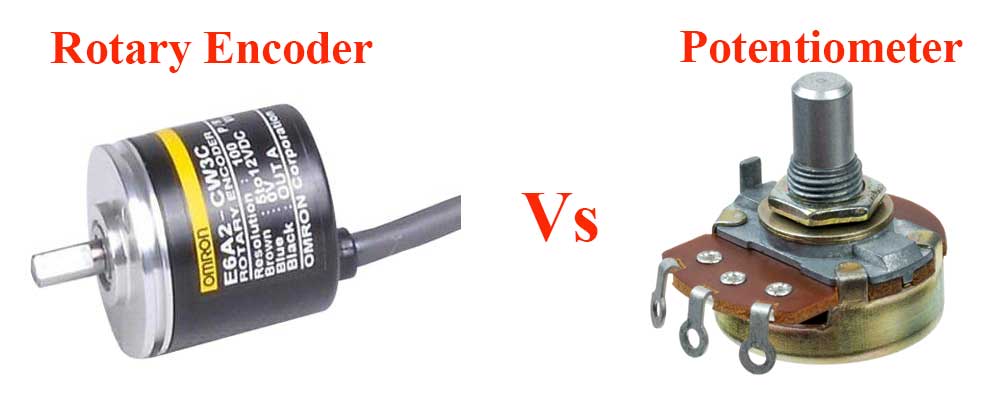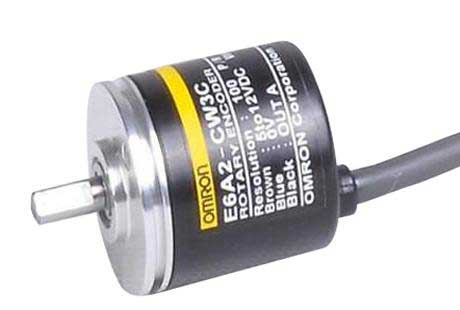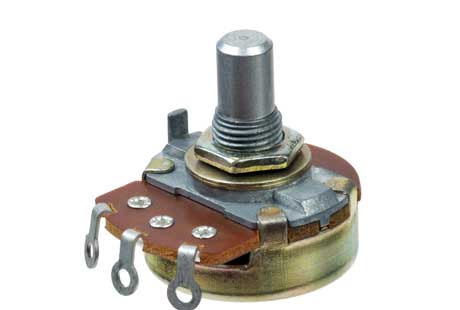Is Rotary Encoder Better Than Potentiometer?
“Is a rotary encoder better than a potentiometer?” That’s a question many enthusiasts and professionals in electronics and automation often think about. Both devices are integral in measuring and controlling positions or movements, but they operate quite differently.
Rotary encoders are known for their precision in detecting the position of a rotating shaft, making them indispensable in high-accuracy applications like industrial control systems.
Potentiometers, in contrast, are more about adjusting resistance smoothly, often used in simpler settings like adjusting the volume on your Speakers. While they might serve similar functions in some contexts, their differences are crucial in determining which is better suited for a specific application.
Let’s delve deeper into these devices to understand their unique strengths and applications.
Understanding Rotary Encoders:
Have you ever wondered how devices like robotic arms get their precise movements?
Well, that’s where rotary encoders come into play. These nifty gadgets are all about precision and control.
So, what’s a rotary encoder? It’s a sensor that tracks the position and rotation of a shaft or axle. Think of it as the behind-the-scenes expert in many machines, converting physical turns and twists into digital data that machines can understand.
There are two main types: absolute Encoders and incremental Encoders. Absolute encoders tell you the exact position, like a GPS giving you a specific location. Incremental encoders, on the other hand, are more about the journey than the destination. They track movement changes, kind of like counting steps on a pedometer.
You’ll find Omron rotary encoders in all sorts of places. From the industrial world, where they guide heavy machinery, to everyday gadgets like your car’s dashboard, they’re the unsung heroes making sure everything runs smoothly and accurately. They’re the crucial link that lets machines understand and respond to physical movements in a precise way.
Understanding Potentiometers:
When we talk about potentiometers, we’re delving into a classic component in the world of electronics. These are essentially variable resistors. Think of them like a volume knob on a radio.
They allow you to adjust levels of electrical resistance, and by doing so, they change the output signal.
Potentiometers are pretty straightforward in their operation. Inside, there’s a resistive element, and a wiper that moves along this element. As you turn the knob or slide the lever, the wiper’s position changes, altering the resistance. This change in resistance then adjusts the electrical signal passing through it.
You’ll find potentiometers in all sorts of everyday items. They’re in your car’s dashboard controls, your home stereo system, and even in some of your favorite electronic toys and instruments. They’re the unsung heroes that give us control over our devices, making them an essential yet often overlooked part of many electronic systems.
Potentiometers Vs. Rotary Encoders:
Potentiometers, with their analog simplicity, are ideal for straightforward control tasks like modulating machine speeds. They’re cost-effective and easy to implement, but they do have limitations in terms of accuracy and wear over time.
Encoders, in contrast, are the digital maestros. They shine in precision, converting physical movements into digital signals for high-accuracy tasks, such as precise robotic arm positioning. While encoders come with a higher price tag, their value is undeniable in precision-critical environments. Let’s dive into a detailed comparison of both…
Principle of Operation:
Potentiometers: These are analog devices that function as variable resistors. In industrial settings, they’re often used for simple control tasks, like adjusting a machine’s speed or the position of a valve. The resistance changes linearly with the mechanical position of a knob or slider.
Encoders: Encoders, on the other hand, are digital sensors. They convert the rotational or linear position into digital signals, which are then used for precise measurements of position, speed, and direction. In industrial applications, they’re crucial for tasks requiring high accuracy, like positioning a robotic arm or monitoring the rotation of high-speed machinery.
Accuracy and Resolution:
Potentiometers: While useful, potentiometers generally offer lower accuracy compared to encoders. Their resolution is limited by the physical properties of the resistive material and the precision of the wiper.
Encoders: Encoders excel in accuracy and resolution. They can provide very precise measurements, crucial in applications where even a small error can lead to significant problems, such as in automated production lines or precision machining.
Durability and Reliability:
Potentiometers: In industrial environments, potentiometers can wear out due to physical contact between the wiper and the resistive element, especially in high-use scenarios.
Encoders: Encoders often have a longer lifespan in industrial settings. They typically use non-contact methods of measurement, reducing wear and tear. This makes them more reliable over time, especially in harsh industrial environments.
Signal Output:
Potentiometers: They provide an analog signal, which can be straightforward but may require additional conversion (like an ADC) for use in digital systems.
Encoders: Encoders output digital signals, which are inherently compatible with modern industrial control systems. This digital output allows for more complex and nuanced control schemes.
Application Suitability:
Potentiometers: They are often used in applications where simplicity and cost-effectiveness are key, and where the control requirements are not overly demanding. For example, in basic machine control where high precision is not critical.
Encoders: In contrast, encoders are suited for applications where precision and detailed feedback are essential. They are widely used in automation, CNC machinery, robotics, and other areas where precise control is paramount.
Cost Considerations:
Potentiometers: Generally, they are less expensive than encoders and can be a cost-effective solution for simpler applications.
Encoders: While more costly, the investment in encoders is justified for applications that demand high precision and reliability. The long-term benefits often outweigh the initial cost, especially in complex industrial systems.
Conclusion:
When deciding between rotary encoders and potentiometers for industrial applications, it’s essential to consider the specific demands of your project or application. Potentiometers are ideal for straightforward, cost-effective control tasks where high precision isn’t crucial. They’re simple to implement but may fall short in accuracy and durability over time.
Conversely, rotary encoders excel in precision and durability, making them indispensable in advanced automation, CNC machinery, and robotics. Their digital output aligns perfectly with modern industrial control systems, offering detailed feedback and control. Although more expensive, their long-term reliability and accuracy make them a worthwhile investment for complex, precision-critical tasks. Let’s dive into a detailed comparison of both to fully grasp their industrial applications.



